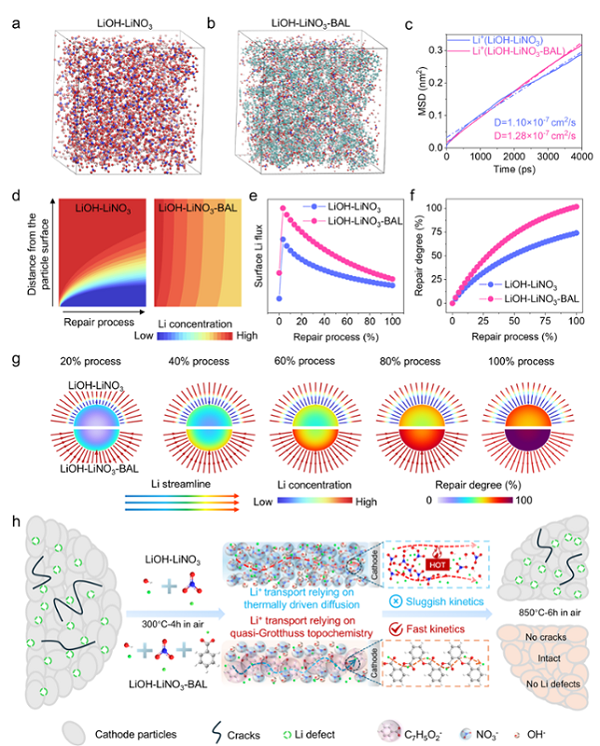XJTU achieves breakthrough in lithium battery cathode material regeneration

Schematic illustration comparing conventional thermally driven Li⁺ transport in molten salt with quasi-Grotthuss topochemical Li⁺ transport for degraded cathode regeneration.
Direct recycling technology is considered a practical approach to addressing environmental pollution and resource waste resulting from spent lithium-ion batteries. However, conventional molten-salt recycling methods primarily rely on slow thermally driven processes for lithium-ion transport, resulting in low surface pre-lithiation efficiency and consequently limiting the regeneration effectiveness of degraded cathode materials.
To overcome the challenges of inefficient pre-lithiation and limited cathode regeneration in traditional molten-salt methods, a team led by Professors Xi Kai, Ding Shujiang, Tang Wei, and Assistant Professor Jia Kai from Xi'an Jiaotong University (XJTU), in collaboration with Associate Professor Zhou Guangmin from Tsinghua Shenzhen International Graduate School, proposed an innovative regeneration strategy for degraded cathode materials based on a Li⁺ quasi-Grotthuss topochemical transport mechanism.
By introducing a special molecular structure containing lithium benzoate into the conventional molten-salt system, the team transformed the thermally driven, disordered diffusion of Li⁺ into a quasi-Grotthuss topochemical transport process, significantly enhancing the lithium-ion transport rate to the cathode surface and ensuring highly efficient and uniform pre-lithiation.
This strategy prevents unfavorable phase transitions caused by insufficient pre-lithiation during high-temperature treatment, and effectively repairs and reconstructs the structure of degraded cathode materials in subsequent annealing stages. Thanks to the Li⁺ quasi-Grotthuss topochemical transport mechanism, the regenerated cathode materials exhibit outstanding cycling stability, with electrochemical performance comparable to commercial cathode materials.
Their research, titled Li⁺ Quasi-Grotthuss Topochemical Transport Enables Direct Regeneration of Spent Lithium-Ion Battery Cathodes, has been published in Angewandte Chemie International Edition.

